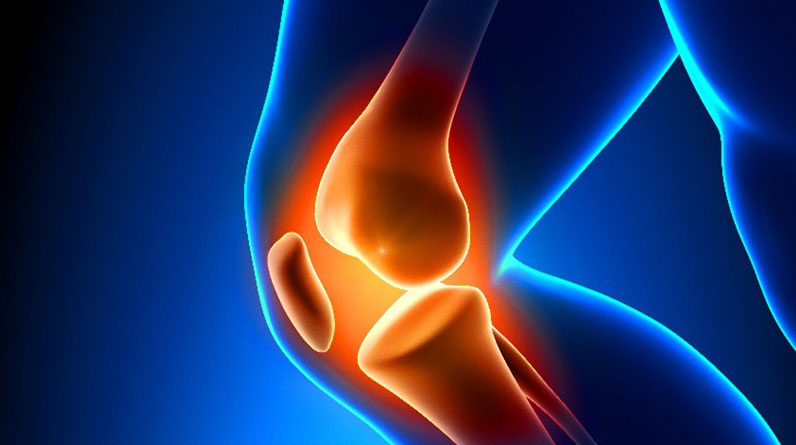
Common Shoulder Injuries
Shoulders are known to be vulnerable joints when it comes to the risk of injury.
The shoulder is a ‘ball-and-socket joint’. Although this type of joint is quite useful for providing a wide range of motion, its anatomical makeup, lack of stability, and multiple weak positions tend to be its downfall.
So, if you’re an active individual who partakes in weight training, for example, it’s imperative that you ensure proper form when lifting. In addition, be sure to choose movements that promote healthy shoulder motion and avoid those that lead to weakened positioning of the shoulder.
Being sedentary and inactive can also lead to shoulder injuries. Due to poor posture, physiological mechanics, and lack of movement, the shoulder can be a much less engaged joint. As a result, you reduce the range of motion, hamper flexibility, and lose the strength of the shoulder joint. The endpoint is shoulder stiffness and ultimately leads to pain and injury.
Lastly, shoulder injuries can be a byproduct of a bigger problem. If you suffer from arthritis or have experienced physical trauma to the area, you are at higher risk for injury.
Shoulder pain and injuries account for millions of doctor visits annually, making this joint quite a troublesome region.
The following will be a discussion of the most common shoulder injuries and how to prevent them and can shed some light as to why shoulder injuries are so common. We’ll also dive a little deeper into treatments and root causes of the most common injuries.
Types of Shoulder Injuries
The vast majority of doctor visits for treatment of shoulder pain involve a rotator cuff injury. Because the rotator cuff is the primary mover of the ball-and-socket mechanism of the shoulder, it tends to take the most damage.
Rotator cuff injuries are the most prominent, but there are several other types of shoulder injuries. Shoulder injuries can involve the joint directly or the surrounding muscles, tendons, and ligaments.
The following are descriptions of the most common shoulder injuries:
• Rotator Cuff Tear
As a network of muscles and tendons that protect, connect, and keep the shoulder intact, the rotator cuff is easily damaged, especially during rigorous exercise or trauma. This area can also become injured over time through standard wear and tear.
• Shoulder Dislocation
Since the shoulder is a ball-and-socket joint, if it is strained to an excess or overextended, the “ball” can be pulled out of the socket. This dislocation can be in several different directions.
• Shoulder Separation
A shoulder separation, often confused with a dislocation, is an injury that impacts the connection of the collarbone (clavicle) and the shoulder blade (scapula). As a result of such trauma, the ligaments involved in connecting the joint becomes torn and damaged.
• Clavicle or Humerus Fracture
Typically as part of a fall or other cause of impact, the clavicle and humerus bones can fracture. These are the most vulnerable and most common bones to fracture upon impact.
• Shoulder Impingement
Impingement is a “pinching” of the tendon within the rotator cuff. Shoulder impingement is typically caused by excessive overhead arm movement while using poor form.
• Frozen Shoulder
As the name goes, the frozen shoulder is just that; the shoulder becomes frozen and loses mobility. This is typically caused by prior trauma or recovery post-surgery.
Most Common Causes & Risk Factors
There are several causes and risk factors of shoulder injuries. By placing your shoulder in compromised positions during exercise or using poor posture, the likelihood of injury is significant. In addition, arthritis is often a complication of prior shoulder injury, whether simply wear and tear or previous traumatic injury. Arthritis can also lead to further shoulder injuries based on the deterioration of the joint that arthritis causes.
Certain sports can be more likely to cause shoulder injuries, such as football and baseball. For example, clavicle fractures are common in football, and rotator cuff injuries are often seen with pitchers in baseball.
Shoulder injuries can happen to anyone for any number of reasons.
The following are the most common causes of the various shoulder injuries:
• Overuse and improper form during exercise
• Arthritis (Rheumatoid, osteoarthritis, Polymyalgia rheumatica)
• Tendonitis
• Traumatic fall or impact
• Sedentary lifestyle (inactivity, poor posture, improper physiological mechanics)
Treatment & Prevention
If you’ve suffered from a traumatic shoulder injury, such as a dislocation, separation, or tear of some sort, medical attention is likely needed immediately. Other injuries will require time to heal. By resting and recovering, taking anti-inflammatories medication, and implementing a contrast therapy protocol (heat & ice), the likelihood of self-recovery is excellent.
In some cases, however, surgery may be needed.
Whatever the case, depending on the type of injury you’ve endured and the severity of the injury, treatment will differ significantly. What follows are the most common treatments:
• Shoulder Strengthening Exercises
• Anti-Inflammatory Medication
• Physical Therapy
• Surgery
• Steroidal Intervention
• Use of Immobilizers (sling or cast)
• Contrast Therapy
• Rest
Some shoulder injuries cannot be prevented due to the random nature of events in life. Yet, there are exercises and lifestyle choices that you can implement daily to ensure strong musculature and mobile joints to aid against injury. These methods can be learned from a physical therapist or sports medicine specialist.
Final Thoughts
In order to keep your shoulder joint healthy, it’s important to take part in a consistent daily exercise that encompasses strength training, mobility training, and range of motion training.
If you’re already an active individual or athlete, you’re likely already doing those things. If that’s the case, the number one priority for you that should be implemented is rest! Just as exercise is imperative, so is recovery.
If a shoulder injury does occur, be sure to seek proper medical attention in a timely manner for optimal healing and the best chance of a speedy recovery.




